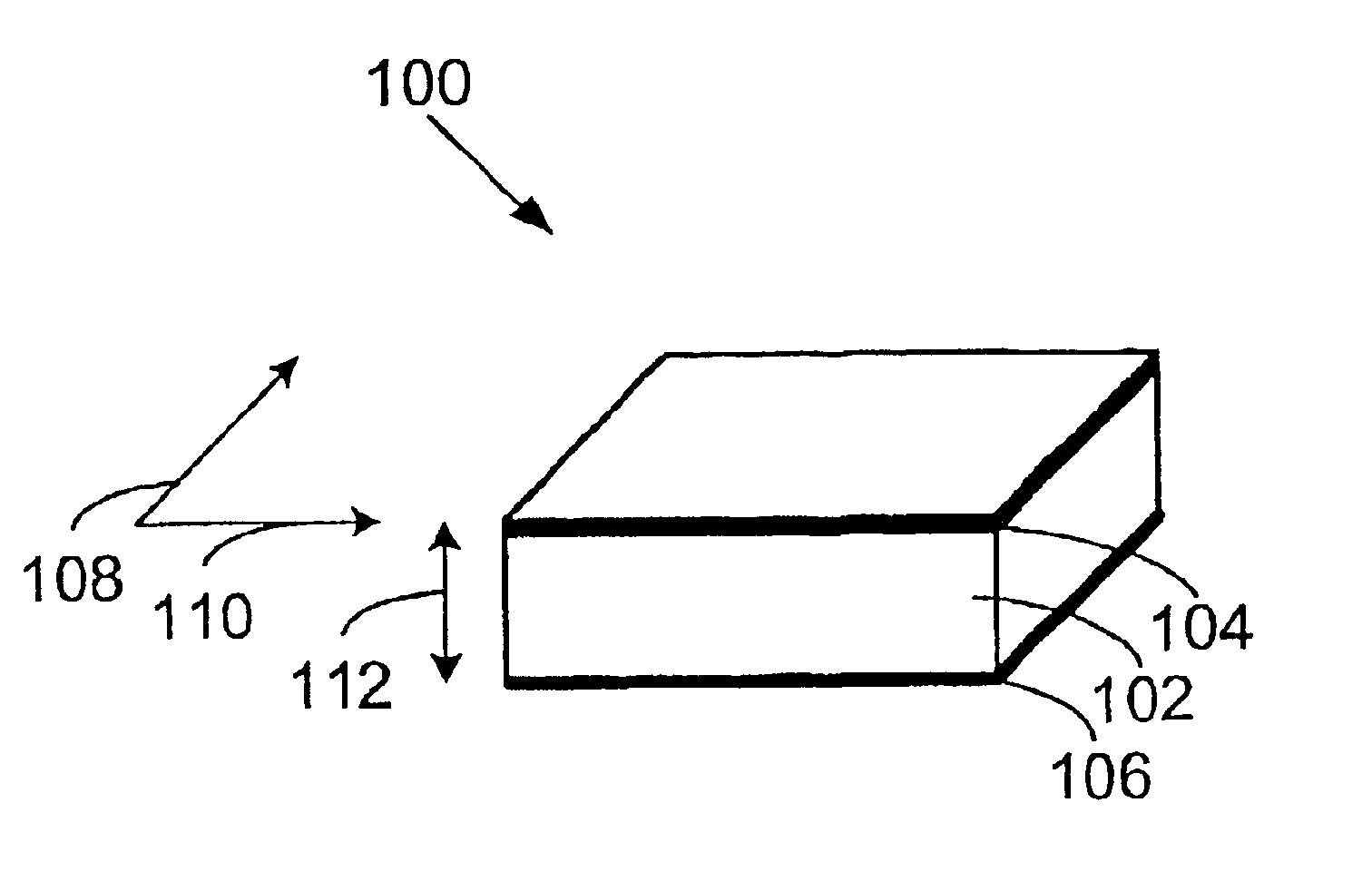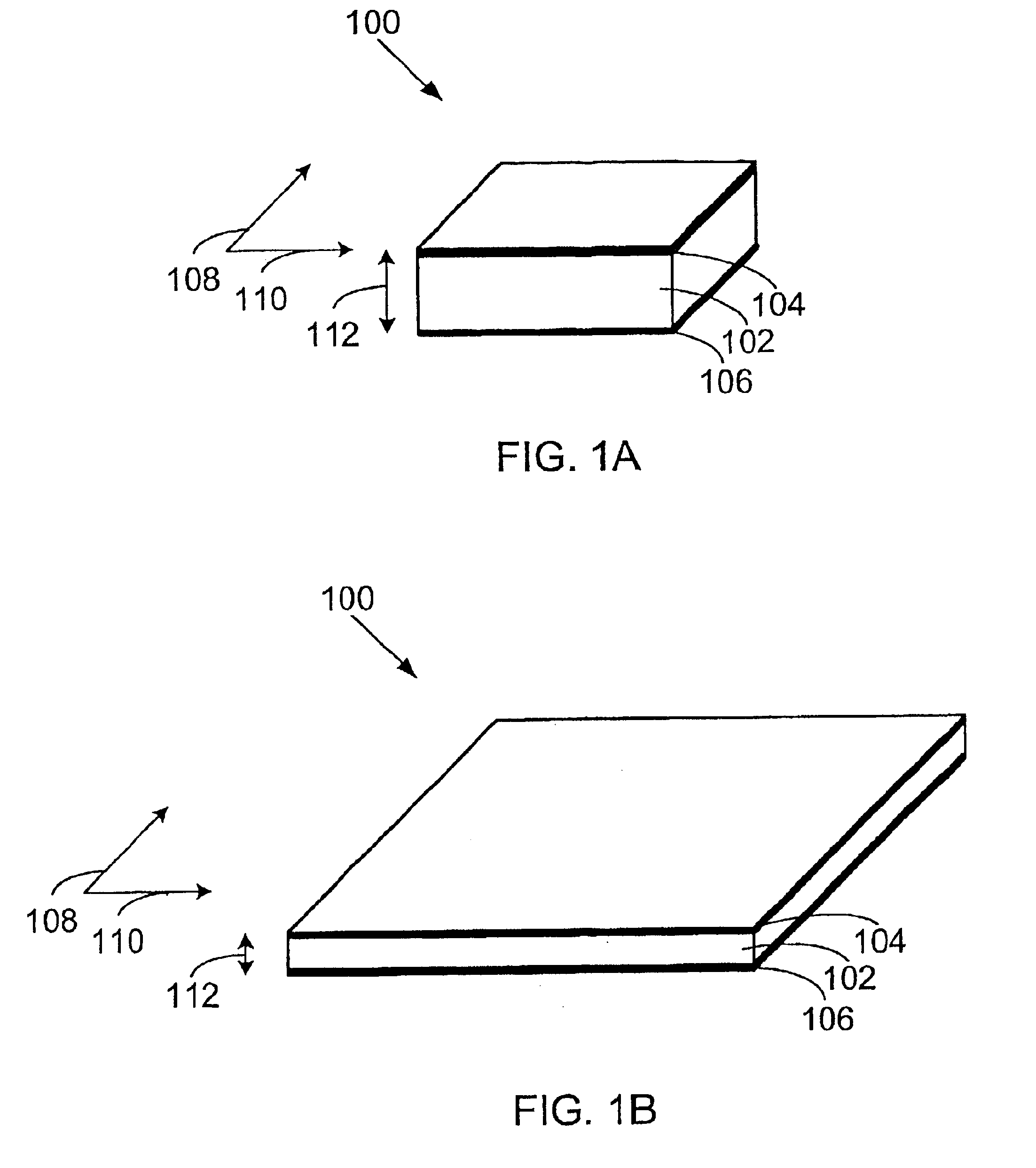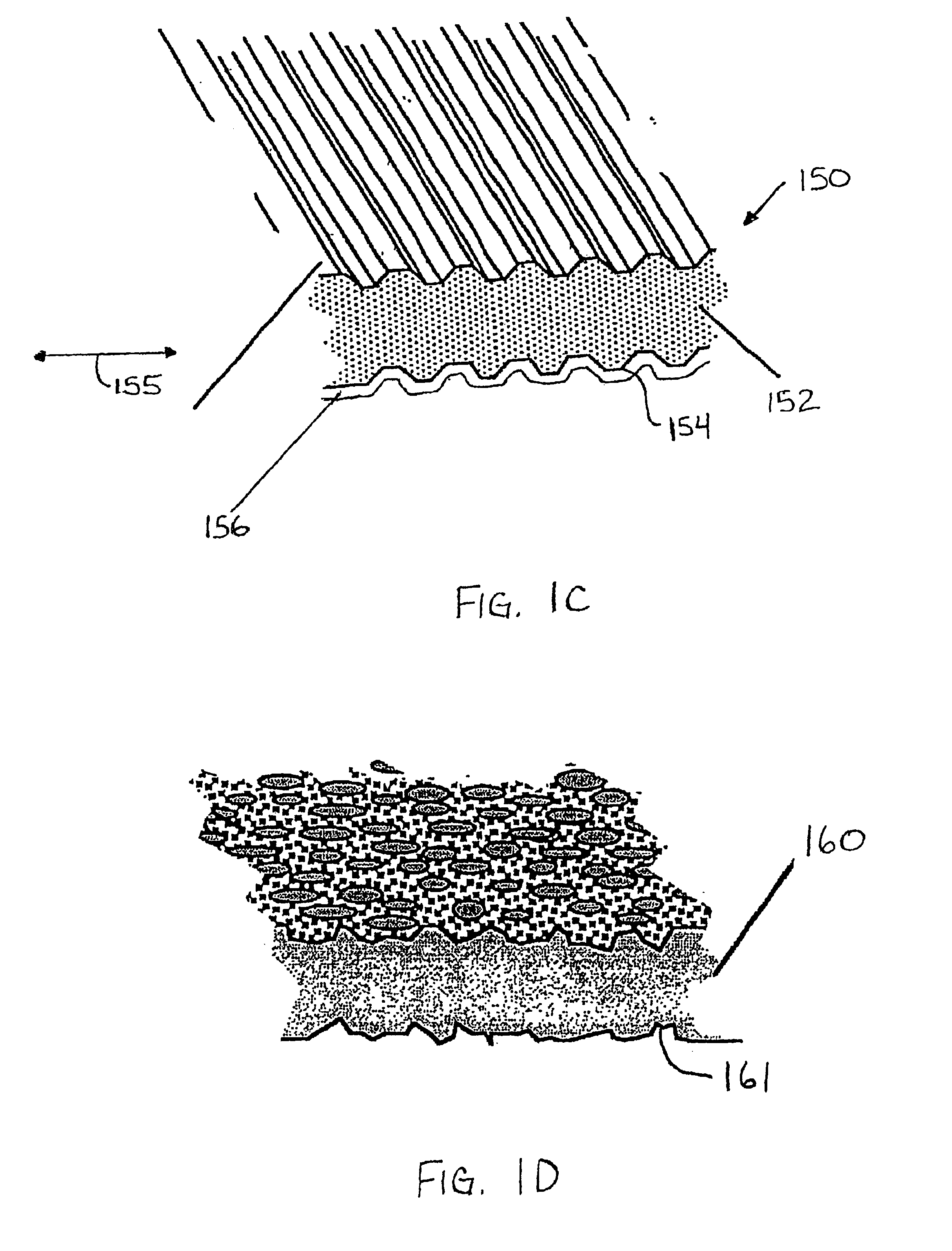Electroactive polymer generators
a technology of electroactive polymer and generator, which is applied in the direction of positive displacement liquid engine, piston pump, lighting and heating apparatus, etc., can solve the problems of electromagnetic motor and solenoids, and unsuitable common electric generator technology, such as electromagnetic generator, which is not suitable for many of these applications, and achieves the effect of improving the conversion between electrical and mechanical energy
- Summary
- Abstract
- Description
- Claims
- Application Information
AI Technical Summary
Benefits of technology
Problems solved by technology
Method used
Image
Examples
Embodiment Construction
[0056]The present invention will now be described in detail with reference to a few preferred embodiments thereof as illustrated in the accompanying drawings. In the following description, numerous specific details are set forth in order to provide a thorough understanding of the present invention. It will be apparent, however, to one skilled in the art, that the present invention may be practiced without some or all of these specific details. In other instances, well known process steps and / or structures have not been described in detail in order to not unnecessarily obscure the present invention.
[0057]1. Overview
[0058]Electroactive polymers deflect when actuated by electrical energy. In one embodiment, an electroactive polymer refers to a polymer that acts as an insulating dielectric between two electrodes and may deflect upon application of a voltage difference between the two electrodes. In one aspect, the present invention relates to polymers that are pre-strained to improve co...
PUM
| Property | Measurement | Unit |
|---|---|---|
| Fraction | aaaaa | aaaaa |
| Fraction | aaaaa | aaaaa |
| Elastic modulus | aaaaa | aaaaa |
Abstract
Description
Claims
Application Information
 Login to View More
Login to View More - R&D
- Intellectual Property
- Life Sciences
- Materials
- Tech Scout
- Unparalleled Data Quality
- Higher Quality Content
- 60% Fewer Hallucinations
Browse by: Latest US Patents, China's latest patents, Technical Efficacy Thesaurus, Application Domain, Technology Topic, Popular Technical Reports.
© 2025 PatSnap. All rights reserved.Legal|Privacy policy|Modern Slavery Act Transparency Statement|Sitemap|About US| Contact US: help@patsnap.com



